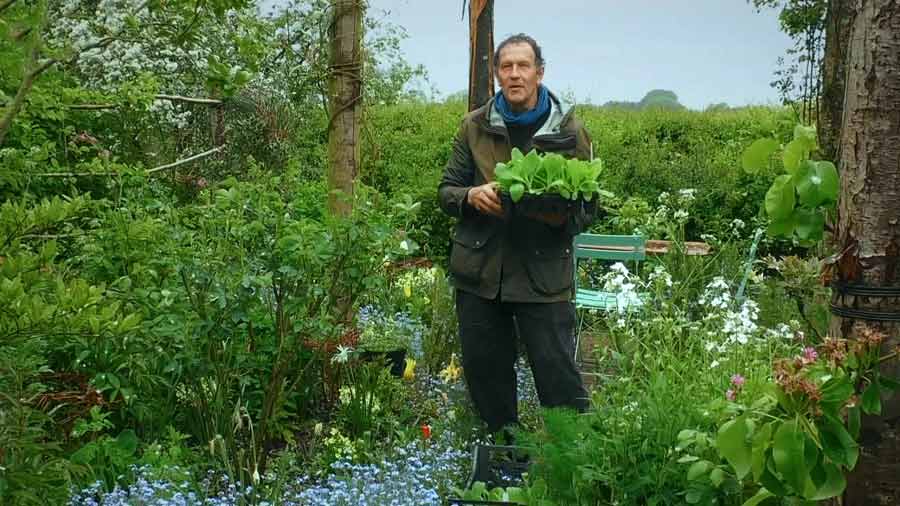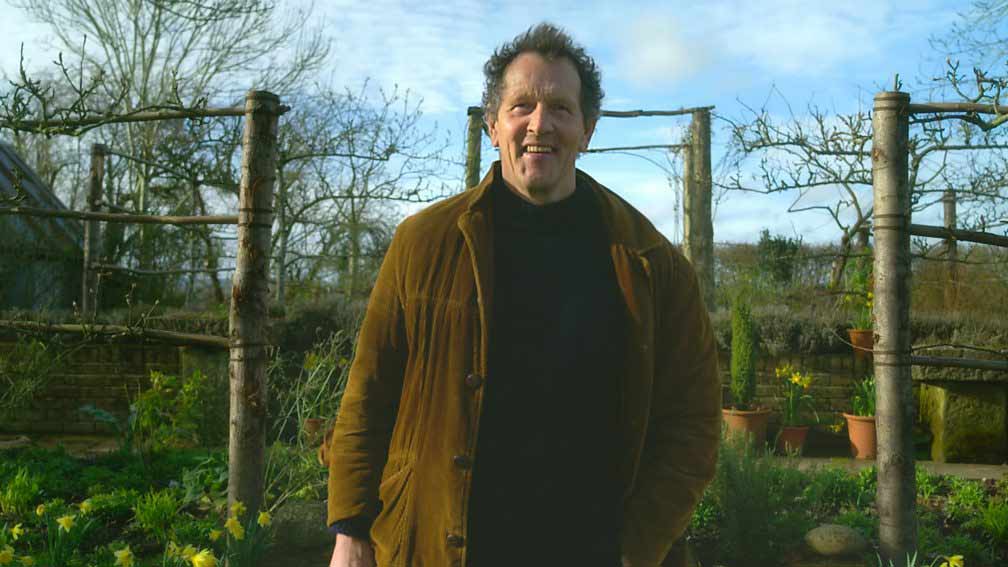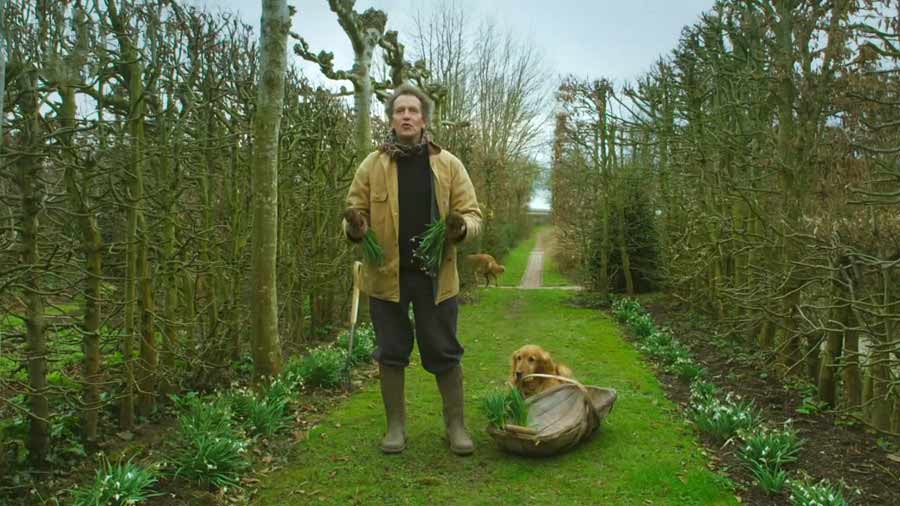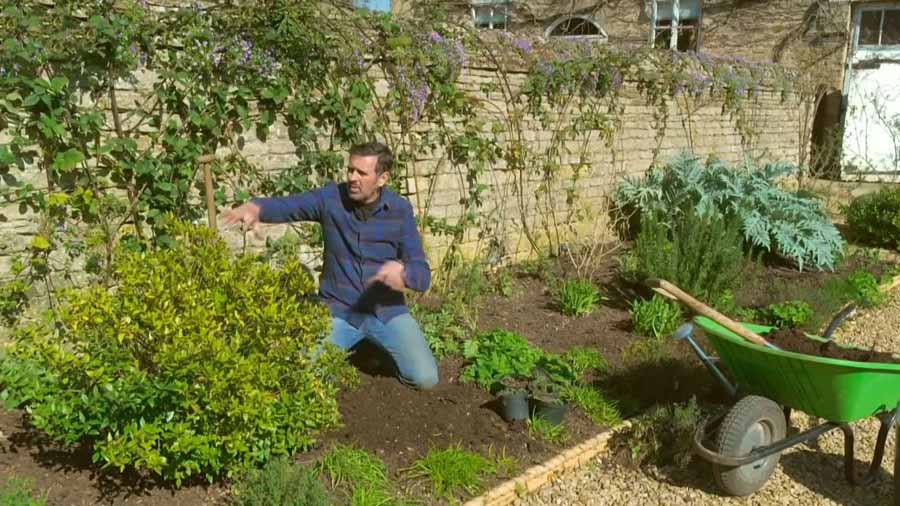Gardeners World episode 8 2020: To help viewers make the most of bank holiday Friday, Monty has plenty of ideas of how to fill the rest of the weekend, from potting on seedlings to sowing tender vegetables.
Rachel de Thame reviews the progress of her new kitchen garden and begins planting out peas and sowing flower seeds. For tips on growing your own at home, Nick Bailey shows how to make an easy cold frame for storing precious plants and seedlings.
With mental health ever important, Joe Swift meets Will Young, whose new-found love of gardening was key to his recovery. And the team travels to Kent to meet a man with a collection of over 80 different varieties of wisteria.
Gardeners World episode 8 2020
Staking perennials
Perennials in borders often put on strong lush growth that makes them vulnerable to collapse, especially after heavy rain or strong winds. Staking them early in the season will help avoid disaster. In particular; tall plants and hybrids with large flowers require additional support.
Plant supports should be ideally inserted in spring, before plants have made too much growth. The plants will then grow through the support and hide it from view. Later staking is difficult as plant growth is more advanced and can easily be damaged. It may be necessary to continue tying the stems or raise the level of the used supports as the plant grows.
However, emergency staking is often necessary. Badly bent or snapped stems should be cut off cleanly. Regrowth may follow and the cut flower stems can be enjoyed in the vase. Otherwise, make-shift supports should be set up as soon as possible to minimise further damage and prevent flopped plants smothering neighbouring plants.
How to grow wisteria
Wisterias do best in well-drained, fertile soil, in full sun. They are native to China, Japan and eastern United States and, of the ten species, the three most commonly grown are Wisteria floribunda (Japanese wisteria), Wisteria sinensis (Chinese wisteria) and Wisteria brachybotrys (silky wisteria). All three species are strong-growing and capable of reaching around 10m (33ft) in trees or spread up to 20m (66ft) against a wall. You can also train wisteria as a free-standing standard in the border or large container.
Planting of wisteria is best done between October and April. Container grown wisterias can be planted at any time of the year, but are easier to care for in autumn or winter. Plant them in fertile, well-drained soil. Wisterias flower best in full sun so choose a south- or west-facing wall or pergola. They will grow in slight shade but flowering will be reduced.
Wisterias are hardy, vigorous climbers reaching over 10m (33ft) height and width. You will need to provide support in the form of wires or trellis against a wall, or garden structures like pergola or arch. Wisteria can also be trained up a tree or grown up a support to form a standard. By training a wisteria into a standard it restricts its vigour and allows to you to grow a wisteria in a border or container.
Trees and shrubs from seed
These techniques apply to all hardy trees and shrubs that have successfully set seed. Bear in mind that named cultivars do not come true from seed, but species plants usually do. While many tree and shrub seeds can be sown in spring, after storage over the winter, others must be sown fresh in the autumn. Many tree seeds, in particular, become difficult to germinate if not fresh.
Sowing in autumn allows the natural winter chilling effect to help break seed dormancy. If seed is bought in spring, or cannot be sown fresh in autumn, there are techniques (described below) that help the gardener to artificially break seed dormancy.
How to make a raised bed
Raised beds are a great way of growing a wide range of plants, and are particularly popular for growing fruit and vegetables. They are a good way of boosting drainage and can be used to introduce a different soil type to your garden. Raised beds are also a useful way to garden if you have restricted mobility, as they reduce the need to bend.
Plants in raised beds can suffer more quickly and more severely from drought due to improved drainage, so keep an eye on watering needs. Modern wood treatments do not contain potentially harmful heavy metals, so are safe to use. If in doubt, line the inside of the bed with polythene. New railway sleepers may contain creosote that should not be used where skin contact is a possibility. Creosote is thought to have dissipated from older sleepers, and these may be used without concern about skin contact.
How to grow dahlias – Gardeners World episode 8 2020
Plant dahlias on free-draining, lighter soils, where they are more likely to survive the winter. While they will grow on heavy soils, you are more likely to need to lift the tender tubers at the end of autumn as they would otherwise suffer when heavy ground gets colder and soggier in winter. All dahlias like a sunny site, ideally with space between them and their neighbours.
As dahlias are tender, you’re best starting the tubers into growth in the greenhouse, then plant them in their flowering site after the frosty days are passed. For most in the UK, this is at the end of May, but in Scotland this is more typically early to mid June. (For an alternative method, see Planting dormant tubers below).
How to grow Japanese maples
Japanese maples are easy to grow in containers or in the ground, with most preferring a sheltered, shady spot. Small and slow growing with a graceful habit and beautiful foliage, they’re the perfect choice for even the tiniest of gardens.
Japanese maples naturally have an elegant shape and, when bought, usually require very little pruning other than removing any winter dieback at the ends of shoots. If young trees produce a strong vertical shoot this can be pruned back to a side branch in late autumn.
Japanese maples are best pruned when fully dormant (November to January), as maples bleed sap from pruning cuts at other times, weakening the tree. However, pruning is still best kept to a minimum as the most graceful shape comes from a tree that has been allowed to develop fairly naturally. As a result, just remove badly-placed or crossing shoots to encourage a good framework of branches to grow.
Potatoes
Potatoes are a versatile vegetable that is eaten all year round. The tubers vary in size, colour, texture and taste and can be grown from spring to autumn.
Potatoes require an open, frost-free site with deep, fertile, moisture-retentive and crumbly soil for high quality and heavy yields. Improve soils by adding organic matter, such as well-rotted manure, in the autumn. Before planting, supplement with a general fertilizer, such as Growmore or blood, fish and bone, applied to the soil surface or spread along the sides of the drill during sowing, at the rate of 1kg per 10m (2.2lb per 33ft) row. Half of this amount will be enough if the garden is known to be fertile.
Potatoes are generally grown from tubers known as ‘seed potatoes’. These are sprouted or ‘chitted’ prior to planting, particularly when growing early season cultivars. Chitting or sprouting tubers extends the growing period and leads to earlier tuber formation and higher yields.





Why do you not feature more of the North of gardens you have the North South dived a lot more than you think there is here in the North